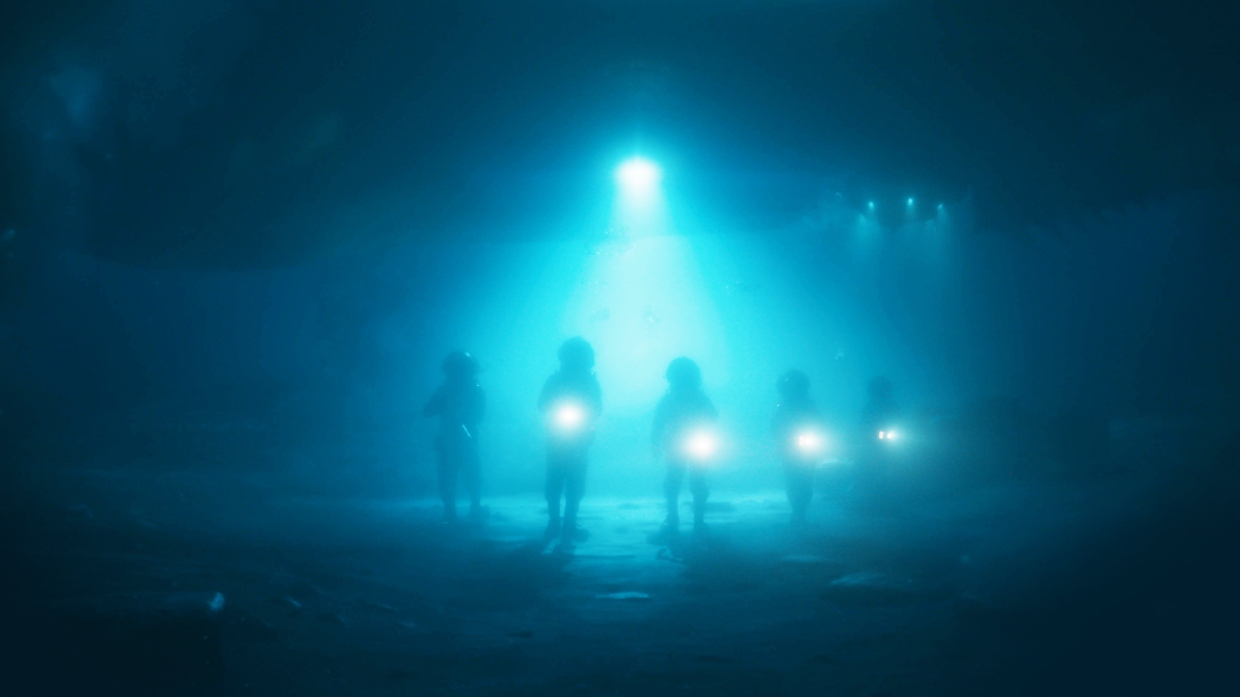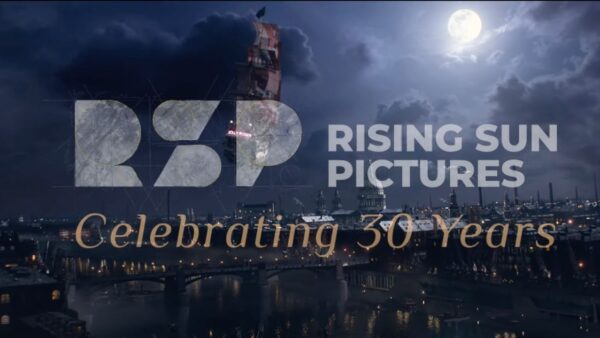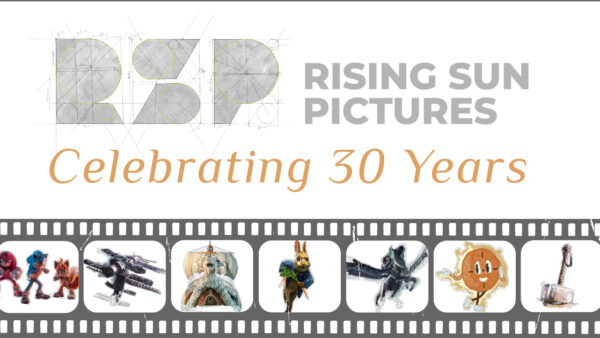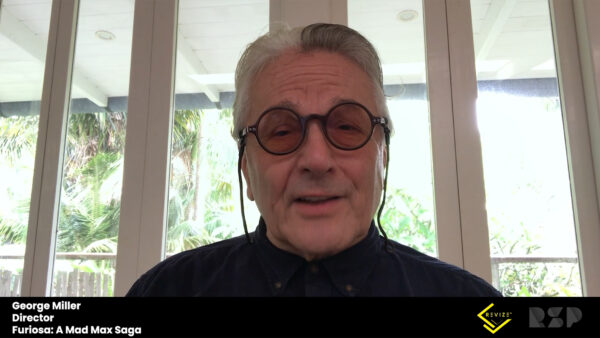Rising Sun Pictures created an expansive and eerily beautiful ocean floor environment for the epic adventure series Nautilus. The underwater landscape, characterised by deep trenches, towering basalt rock formations, and ominous sea creatures, appears in episode six, where the crew of the legendary submarine ventures into the lost city of Atlantis.
Inspired by characters and storylines created by Jules Verne, Nautilus, the 10-part series was produced in Australia, and tells the origin story of the iconic Captain Nemo, an Indian prince robbed of his birthright and family, a prisoner of the East India Mercantile Company and a man bent on revenge against the forces that have taken everything from him.
Working under the direction of production VFX Supervisor Derek Wentworth and VFX Producer Kate E. Mills, RSP was tasked with producing the exterior of the ancient city of Atlantis, which sank to the bottom of the ocean during a cataclysmic volcanic eruption, and now rests under a gigantic cave composed of volcanic debris. In episode six, the Nautilus approaches the ruins of the city, and crew members exit the ship in diving suits to investigate. Slowly making their way across the ocean floor, they pass wondrous sites including a gorgeous display of bioluminescence while being threatened by sharks and otherworldly, spider-like crinoids.
RSP brought together a team of nearly 100 artists for the project. “Having the right resources is essential, but it’s equally important to have the best artists for the job,” says VFX Producer Jayne Herrmann. “While many talented creature artists exist, few specialise in sea life. Our team embraced the challenge, and it turned into a truly wonderful adventure.”
Except for a few practical set pieces, Atlantis’s cave exterior and surrounding sea floor are CG. Artists based the environment on real-world imagery of volcanic rock, deepwater trenches, ridges, abyssal plains and hydrothermal vents. “The landscape had to look like it was formed by natural forces,” explains RSP VFX Supervisor Christoph Zollinger. “Yet, it also had to suggest human activity to support the Atlantis narrative. We tapped into all our expertise to give the scene a truly epic quality.”
One of the hardest things to simulate was the salt water that envelopes the scene. The water itself can’t be seen but is suggested through the way light is absorbed, reflected and refracted, and through particulate matter and small marine life. “We wanted to be true to the physics of how light behaves underwater,” explains Zollinger. “Above water, you see the full spectrum of visible light from red to green to blue, but below the surface, it’s different. The farther you are from the light source, the less you see red or green. Ultimately, it’s blue or it’s nothing at all. Light was our starting point in terms of communicating the depth of a scene.”
Light plays a crucial role in supporting the narrative, it heightens the sense of mystery and danger. “We devised a unique approach to illuminate the human characters as they move along the ocean floor toward Atlantis,” explains Compositing Supervisor Francesco Cadoni. “We created a beacon projected from the Nautilus to light their path. The blue light that falls on the crew symbolises ‘safety’ and ‘home,’ while everything ahead remains in darkness. Additionally, the lanterns they carry emit a warm glow, further distinguishing their immediate surroundings.
Air bubbles escape from the crew’s diving suits, mimicking real-life behaviour. Inspired by 19th-century breathing apparatuses, the bubbles are carefully choreographed to enhance story points and character interactions. “We took some artistic license, making the bubbles slightly smaller than they would be in reality, as well as creating additional vortex forces to prevent them from spreading out too far” recalls Zollinger. “This gave us better control, allowing us to prevent them from obscuring faces, for example and making them less distracting overall.”
RSP artists meticulously incorporated numerous details into the environment to add depth, enhance beauty, and support the narrative. Among these are towering basalt pillars that stand like sentinels around the entrance to the massive, dome-like cave that conceals Atlantis. They also introduced bioluminescence—a vibrant display of light produced by oceanic ‘glow worms.’ “Our challenge was to craft something both eerie and beautiful without overshadowing the actors,” says Cadoni. “The goal was to evoke the exotic nature of the environment, making viewers feel immersed in it, but in a subtle, subliminal way.”

RSP’s CG team crafted several intimidating creatures for the series. Among them is a school of crinoids, seemingly harmless until one suddenly latches onto a character and drags him away. “The key challenge with the crinoids was figuring out how they should move.” relates Zollinger “As a horror element in the scene, we wanted their movements to be unsettling and for them to appear threatening as they emerged into the light. Their movement had to make sense within the environment,” he adds. “They’re always reacting to or chasing something, navigating over rocks and debris, never moving in a straight line or across smooth surfaces.”

Particularly challenging were the shots where crinoids interact with human characters. “In one sequence, an actor is attacked by the creatures,” notes Cadoni. “The crinoids are in contact with him at every point. That alone was complex, but we also had to carefully manage the interplay of light and shadows.”
RSP also created two highly realistic sharks that the crew cautiously avoids while navigating back to the Nautilus.

Herrmann notes that despite the project’s complexity, it progressed smoothly and efficiently, thanks to the strong rapport RSP established with Wentworth and Mills. “Derek and Kate were fantastic collaborators,” she affirms. “We were aligned throughout the entire process. It was a truly positive experience.”
Zollinger notes that the team’s early conceptual work paid off, providing extra time for creative experimentation while still meeting deadlines. “The shots were incredibly complex, with layers upon layers of effects simulations, floating particles, bubbles, and other elements to achieve the underwater look,” he explains. “Creatively, we were well-prepared from the beginning. Although we faced technical challenges along the way, RSP had the resources to resolve them quickly. The real key was our exceptional department heads, who ensured everything came together seamlessly, resulting in outstanding final shots.”





